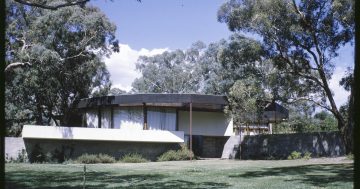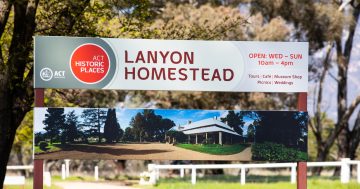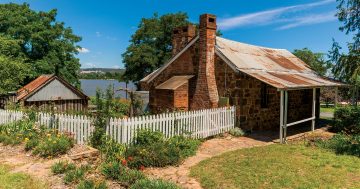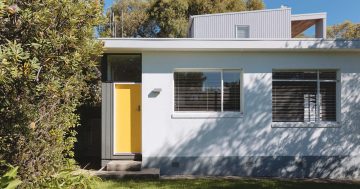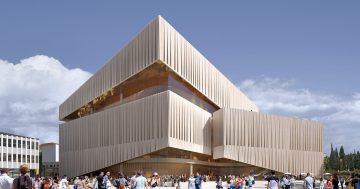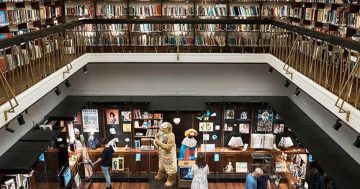
Amy Jarvis hopes more local residents will come to appreciate Canberra’s mid-century buildings. Photo: Elizabeth Masters.
In Canberra, many of us pass by mid-century modern buildings and artworks every day without ever recognising their significance.
Amy Jarvis, co-founder of Canberra Modern, laments the demolition and loss of many such treasures and wants to help people recognise their value to Canberra and its reputation.
Canberra Modern had its beginnings in 2016 when Amy and industry colleagues Rachel Jackson and Edwina Jans decided to do more than just complain that so many buildings had disappeared.
“We thought, rather than sitting there and wishing the government would do more and the community would care more, there might be a gap we could fill,” Amy said.
“We wanted to build recognition of Canberra’s unique identity as a young city (in built terms) so that, rather than Canberra bashing, people would recognise that our built heritage is a rare and special thing, not something to be embarrassed about.
“I believe that if you don’t appreciate something, you don’t care if you lose it. Once it’s lost, you can’t get it back.”
While mid-century architecture has a special place in Amy’s heart, her passion extends to all heritage places and her career has included work with the University of Canberra, GML Heritage and the Australian National University.
She’s currently acting director of ACT Historic Places which cares for Lanyon Homestead, Calthorpes House and Mugga Mugga Cottage, as part of the ACT Government’s Cultural Facilities Corporation.
Amy’s career in heritage conservation came about almost by accident. When choosing a university course, she had teaching in mind. But her eye alighted on “architectural history” as part of a cultural heritage degree and she thought that sounded “like fun”.
Her honours subject ‘The Beer with No Pub’ examined the decline of country pubs and its impact on towns.
“It showed me that I had an interest in social history, as well as buildings. I love the fabric of buildings but I also love the stories around them.”
While no longer working at ANU, her nine years there have left their mark.
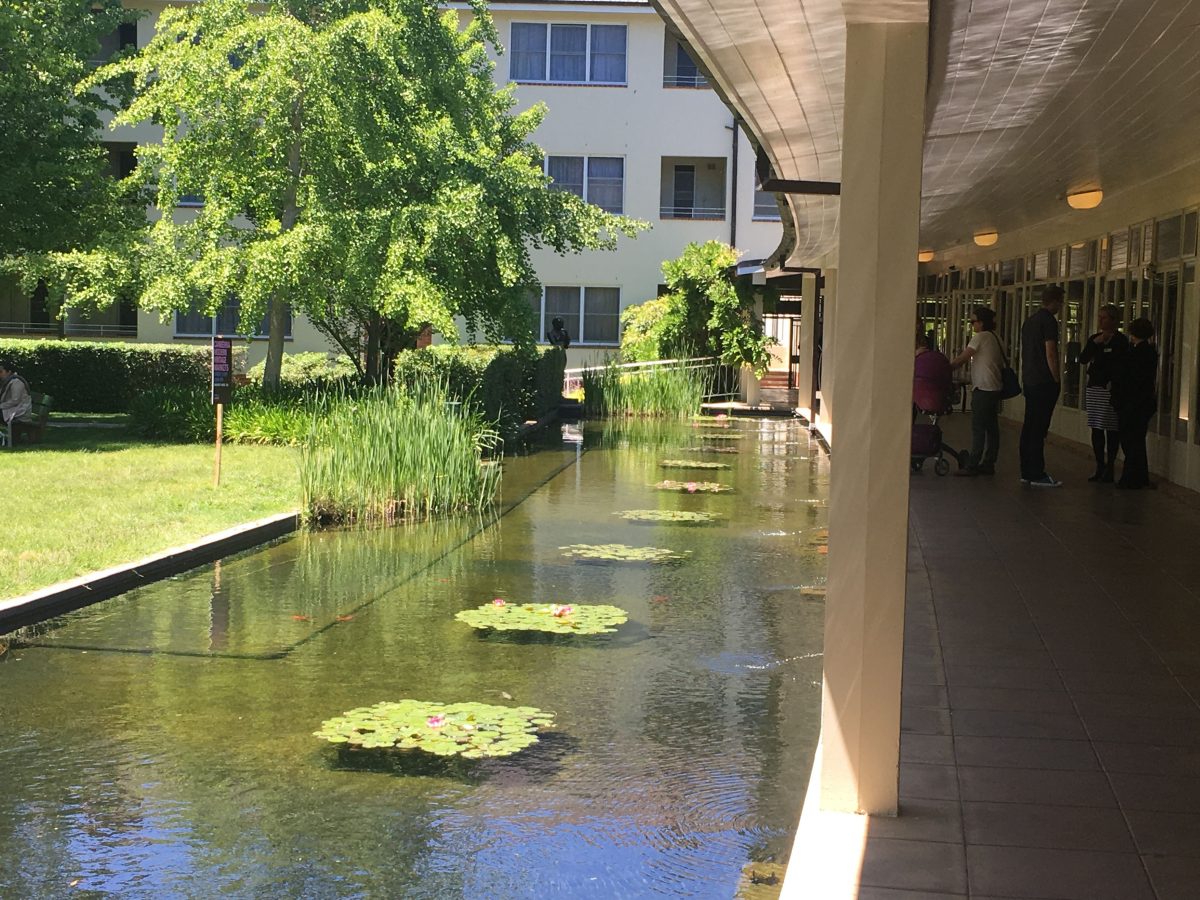
The fully integrated design of University House makes it a great favourite with Amy. Photo: Amy Jarvis.
“I just love the place,” she said. “It’s such a wonderful part of mid-century Canberra, that kind of post-war optimism. The ANU is the embodiment of that spirit of ‘let’s make Australia and Canberra a place people want to come to’.”
In hindsight, Amy thinks her interest in history and old things started in her grandmother’s 1950s “typical post-war fibro house” in Ganmain, NSW, where Amy lived until she was three.
“I think my love of mid-century design probably happened then without me even realising. For me it was a bit more of nostalgia rather than design at that stage.”
Working at the ANU cemented that passion. One of her fondest memories is working closely with her friend and mentor Derek Wrigley, the renowned designer and architect who headed up the ANU Design Unit.
“Sadly he passed away last year at 97 but it was a privilege to know someone who was such an influential designer and a key part of Canberra’s design aesthetic … street furniture and things around the town that people wouldn’t even know were his.
“His ANU furniture collection is an unsung hero but it’s one of the most significant in Australia.”
For those not too sure what modernist buildings are, Amy reveals some she’d encourage you to check out.
“I’ve always been a big fan of Manning Clark House, built in 1952 by Robin Boyd, and I welcome any excuse to get inside that wonderful space,” she said.
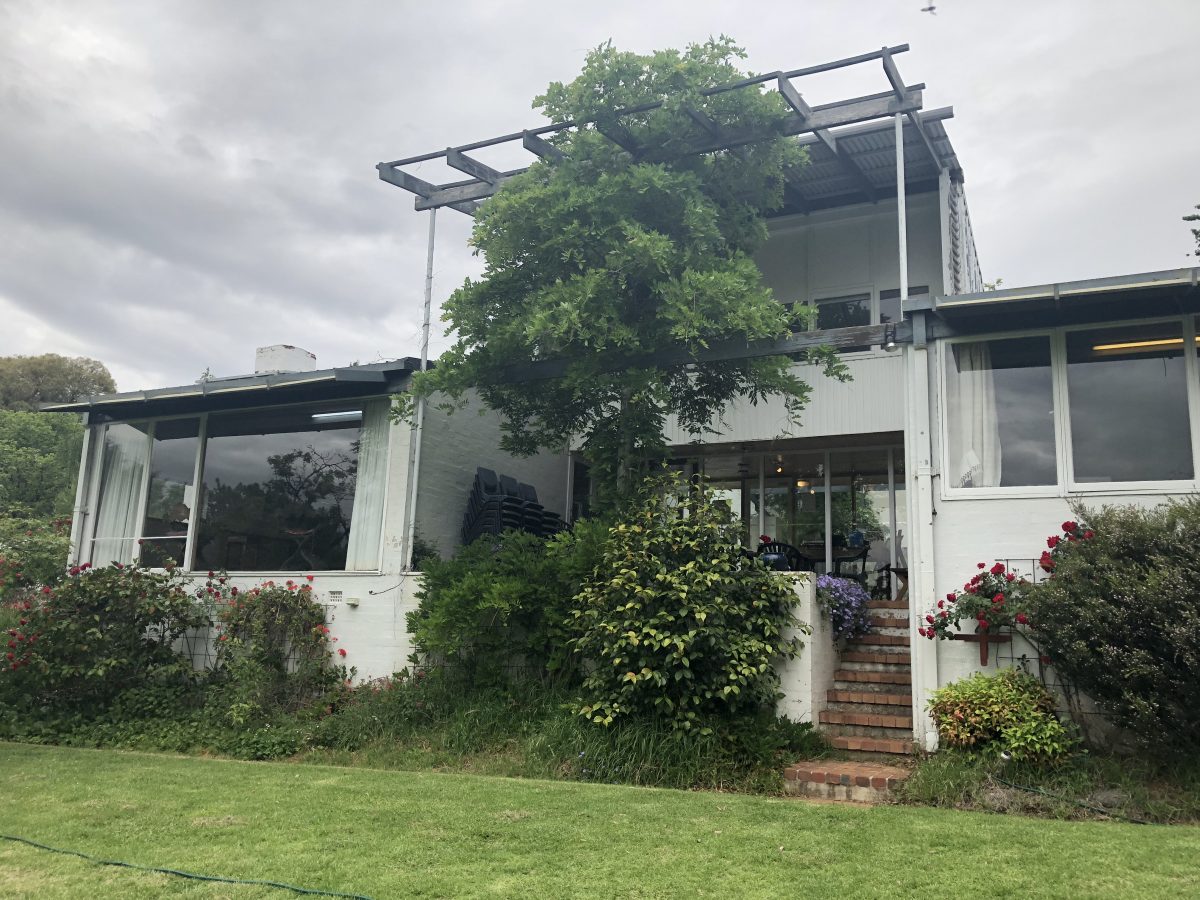
Amy is a big fan of Manning Clark House. Photo: Amy Jarvis.
“And one of my favourite buildings is University House at the ANU. It’s a fully integrated design, from the landscape, to the architecture, the interior, the furniture and the cutlery.”
University House is undergoing extensive repairs following the 2020 hailstorm but will hopefully open again late next year.
Amy also loves the work of architect Enrico Taglietti, especially his War Memorial Annexe in Mitchell.
Amy enjoys guiding tours for Canberra Modern and now realises visitors are just as interested in the quirky stories of people connected to a building as much as the architecture itself.
She was awarded a Churchill Fellowship in 2018 to study the promotion of mid-century architecture in the United States and came home brimming with ideas.
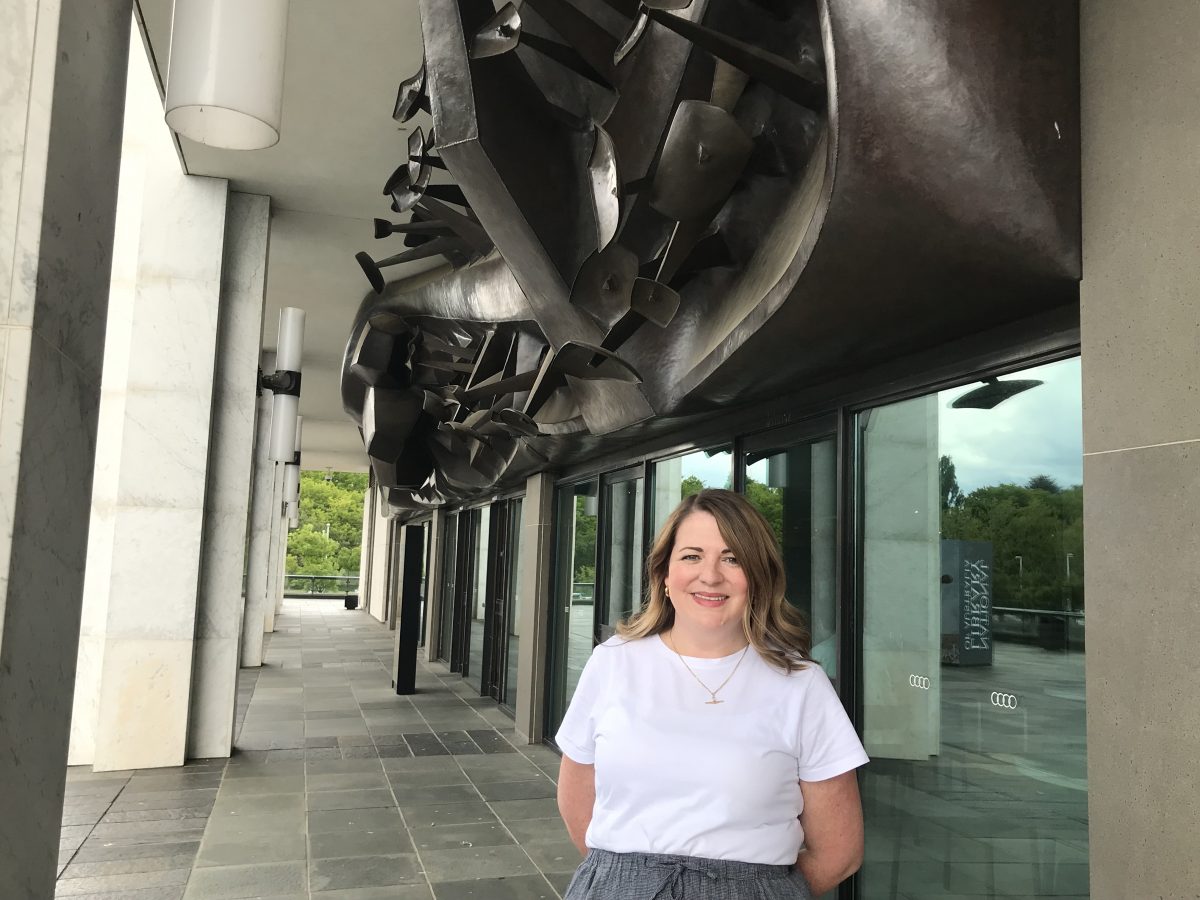
Amy with the 1968 Tom Bass Lintel Sculpture above the entrance to the National Library, containing three tonnes of copper. Photo: Elizabeth Masters.
“Throughout the US, they’ve used architecture to build communities, to build identity and to transform the way people relate to a city or a space. That can happen in Canberra too.
“I live in hope that we’ll learn to love the modernist buildings that are special to our city and that they will gain the protection that they need.”












